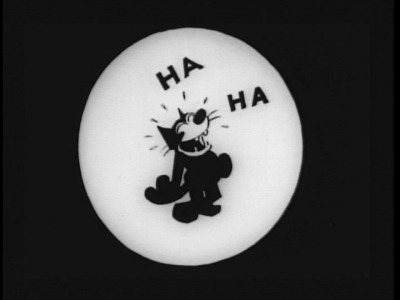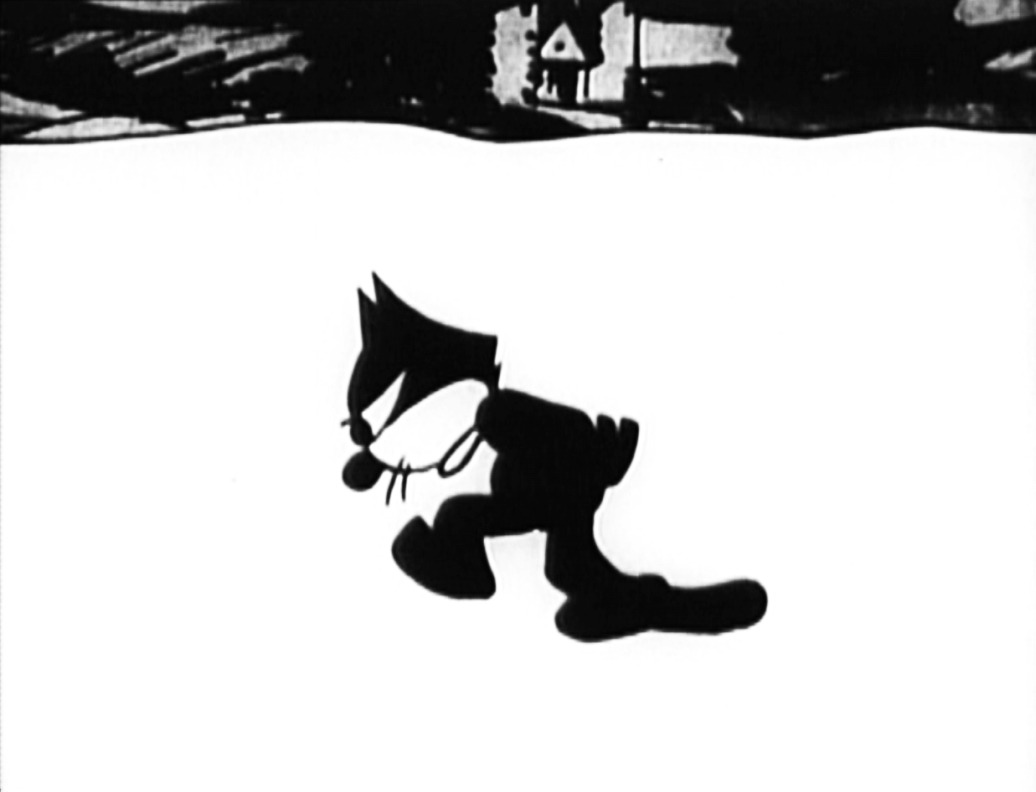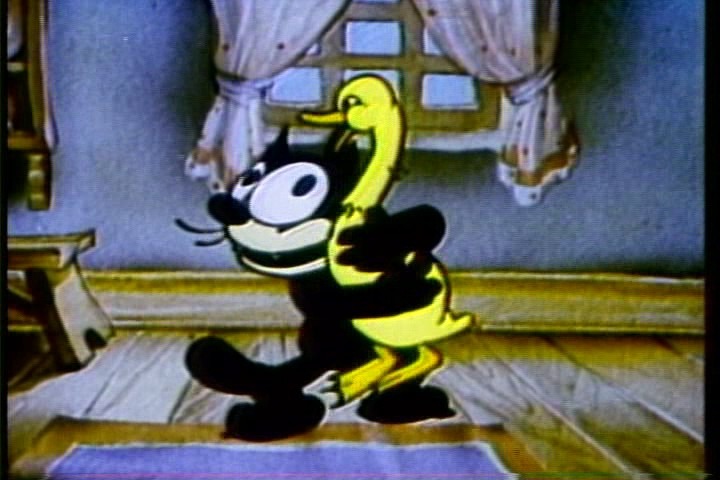Felix the Cat, with his mischievous smile and magical bag of tricks, stands as one of the most iconic and enduring characters in animation history. Since his debut in the silent film era, Felix has captivated audiences with his whimsical adventures and distinctive personality. This charming feline hero first leaped onto the screen in 1919, quickly becoming a symbol of the animation industry’s potential for creativity and storytelling.
Through the decades, Felix has navigated the changing landscapes of culture and technology, evolving from a simple black-and-white figure into a beloved global mascot. This article takes a closer look at Felix the Cat’s journey, tracing his paw prints from the early days of animation to his status today as a classic character known and loved around the world.
The Creation of Felix the Cat
The story of Felix the Cat’s creation is a fascinating glimpse into the early days of animated cinema. Created by Otto Messmer during his time at the Pat Sullivan studio, Felix made his first appearance in the 1919 cartoon “Feline Follies.” Although Sullivan is often credited with the creation of Felix, it was Messmer’s creative genius that brought the character to life on the screen. Felix was initially designed with a simple yet expressive black body, large eyes, and a wide smile, characteristics that made him instantly recognizable and beloved by audiences.
In an era dominated by live-action films, Felix the Cat emerged as a pioneering figure in animation, introducing innovative techniques and storytelling methods that would influence the industry for years to come. Felix’s early cartoons were silent, relying on visual gags, expressive movements, and situational comedy to entertain viewers.
Felix the Cat’s Rise into Stardom
After his introduction in 1919, Felix the Cat quickly ascended to stardom, capturing the hearts of audiences with his charismatic antics and adventurous spirit. This rapid rise in popularity was unprecedented for an animated character at the time, making Felix a pioneer in the animation world. His early cartoons, characterized by inventive plots and a unique blend of humor and charm, were a hit among viewers of all ages. Felix’s ability to get into and out of trouble with cunning and creativity, often with the help of his magical bag of tricks, resonated with the public’s imagination.
By the early 1920s, Felix had become a cultural phenomenon, appearing not only in cartoons but also in newspapers as a comic strip, on merchandise ranging from toys to postcards, and even as the first animated character to make a balloon appearance in Macy’s Thanksgiving Day Parade. His popularity also extended internationally, making him one of the first global icons of the emerging animation industry. The character’s appeal was so broad and enduring that he became a mascot for various companies and was used in experimental television broadcasts, further solidifying his status as an entertainment trailblazer.
Felix the Cat’s Popularity After the 1920s
Following the roaring success of the 1920s, the journey of Felix the Cat took several turns through the decades. As the animation industry evolved, introducing synchronized sound and color, Felix’s initial popularity faced challenges. The introduction of sound cartoons in the late 1920s, epitomized by characters like Mickey Mouse, marked a shift in audience preferences, and Felix struggled to maintain his leading position without a transition to sound films.
However, Felix’s story didn’t end there. The 1950s heralded a revival for the character, thanks to television. New Felix the Cat cartoons were produced, this time embracing the technological advancements that had transformed animation. These episodes introduced a wider audience to Felix’s magical world, complete with his iconic “Magic Bag of Tricks,” which became a central element of his adventures, allowing him to create various objects and vehicles and even escape from tricky situations.
Throughout the 20th century and into the 21st, Felix continued to appear in various media forms, including comic books, television specials, and merchandise, maintaining a loyal fan base. His timeless appeal ensured that he remained a beloved figure in popular culture, symbolizing the golden era of animation and the enduring charm of its characters.
Felix also remains a figure of nostalgia, representing the golden age of animation and the simplicity of early animated storytelling. His centennial anniversary in 2019 was celebrated by fans around the world, highlighting the lasting legacy of a character who began as a simple cartoon yet became an immortal icon in animation history.
Interesting Facts About Felix the Cat
Felix the Cat is full of surprises that extend far beyond his on-screen antics. Here are ten interesting facts about this iconic feline:
- First Character Sensation: Felix was not only one of the first stars of the animated world but also the first character to achieve a level of popularity that transcended the screen, becoming a cultural phenomenon. His image graced everything from ceramics to toys, making him an early example of character merchandising.
- Silent Film Origins: Felix made his debut during the silent film era, with his first appearance in the 1919 short film “Feline Follies.” His ability to communicate humor and emotion without spoken dialogue made him a hit with audiences worldwide.
- Creator Dispute: While Pat Sullivan is often credited with creating Felix, it was actually Otto Messmer, one of Sullivan’s animators, who brought Felix to life. Messmer’s creative genius was behind Felix’s design and many of his early adventures, though Sullivan maintained public credit.
- Magic Bag of Tricks: One of Felix’s most recognizable features is his Magic Bag of Tricks, a versatile accessory that could transform into almost anything. Introduced in the later cartoons, this bag became a staple of Felix’s character, symbolizing his ability to navigate any challenge with creativity and resilience.
- Transition to Television: After fading from the spotlight in the animation world, Felix found a new audience on television in the 1950s. The revival introduced the Magic Bag of Tricks and updated Felix for a new generation of fans.
- First Balloon in Macy’s Parade: Felix earned the distinction of being the first character balloon featured in the Macy’s Thanksgiving Day Parade in 1927. This debut marked the beginning of a tradition of character balloons in the parade, cementing Felix’s place in pop culture history.
- Voice Debut: Felix first “spoke” on screen in “The Twisted Tales of Felix the Cat” in the 1990s, a modern revival that introduced Felix to yet another generation. This series maintained the surreal and whimsical elements of the original cartoons while giving Felix a voice.
- NASA’s Mascot: Felix has been used as a mascot by various organizations, including NASA. In 1968, Felix was chosen as the official mascot of the Apollo 11 lunar module, Eagle, showcasing his enduring appeal and association with adventure and exploration.
- Comic Strip Success: Felix also starred in his own comic strip, which ran from 1923 into the 1940s. The strip expanded Felix’s universe, introducing new characters and adventures that were not seen in the cartoons.
- International Icon: Beyond the United States, Felix enjoyed worldwide popularity. He was especially beloved in Japan, where he inspired various merchandise and even influenced the naming of the famous electronics company Sony, originally called “Tokyo Tsushin Kogyo” (Tokyo Telecommunications Engineering Corporation). Co-founder Akio Morita was a fan of Felix, admiring the cat’s luck and success.
These fascinating facts about Felix the Cat reveal the depth and breadth of his influence on the animation industry, popular culture, and beyond. From his early days in silent film to his status as a beloved icon across generations, Felix’s legacy continues to enchant and entertain.
Conclusion
Through changing times and trends, Felix the Cat has remained a beloved figure, his iconic smile and bag of tricks continuing to capture the imaginations of audiences around the world. As we reflect on the remarkable journey of Felix the Cat, it’s clear that his impact on the world of animation and popular culture is both profound and enduring. From his humble beginnings in silent films to becoming a global icon, Felix’s adventures have delighted fans for over a century.




